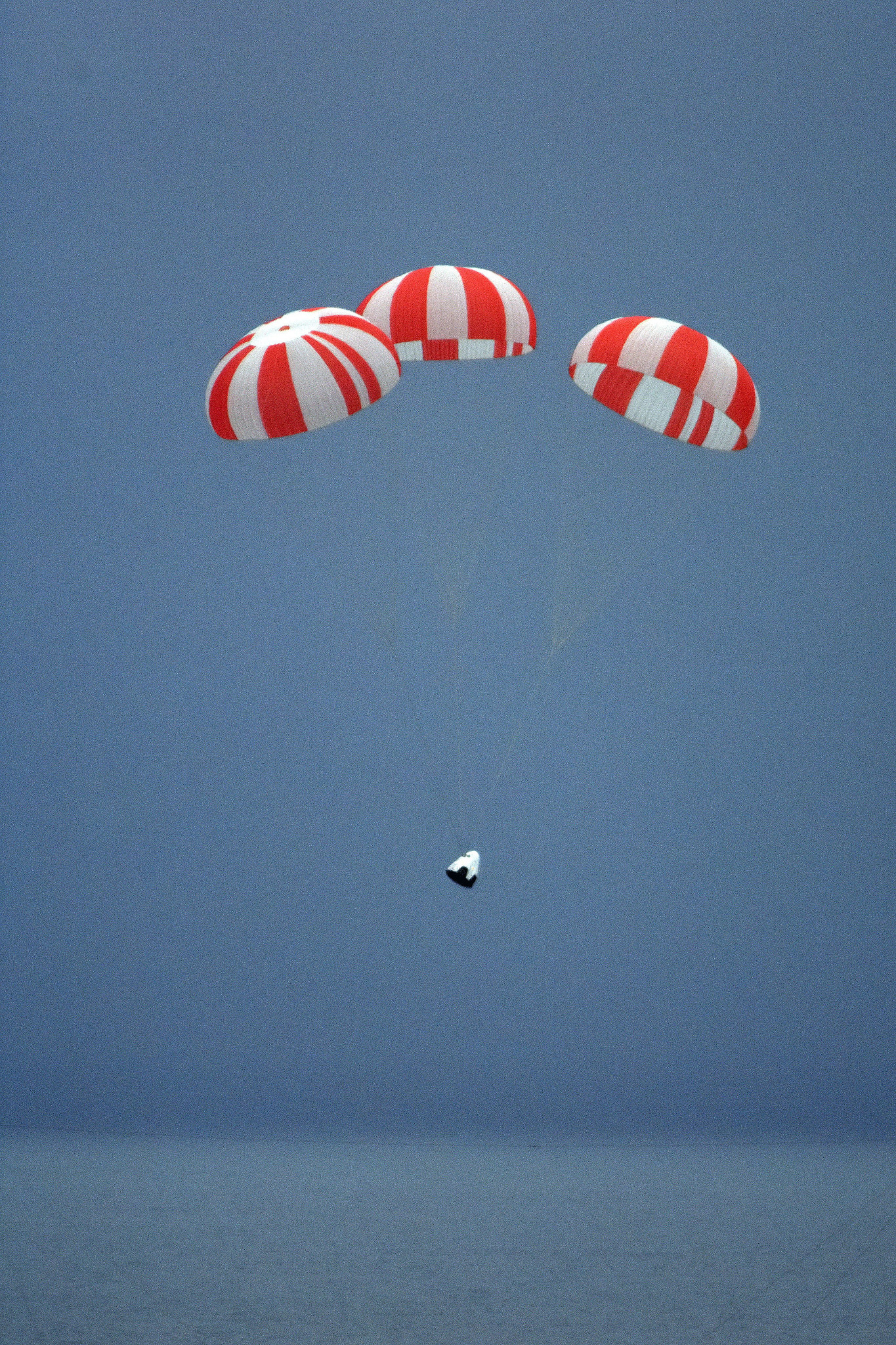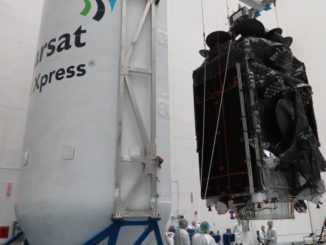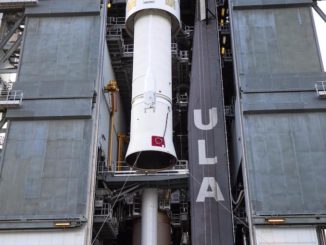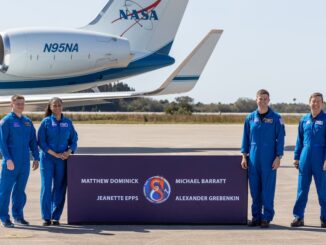
Staying true to a corporate philosophy that favors high-visibility flight tests, SpaceX plans to continue wringing out major parts of the company’s human-rated Dragon spaceship in a sequence of dramatic flights leading up to the capsule’s first crewed mission scheduled for 2017.
“We have a very aggressive and exciting year ahead of us,” said Garrett Reisman, SpaceX’s director of crew operations and a former space shuttle astronaut.
If everything goes according to plan, SpaceX says it can send an unmanned version of the next-generation Dragon spacecraft to the International Space Station by the end of 2016. An orbital test flight with two pilots will follow in early 2017 to cap a series of test milestones leading to NASA’s certification of the capsule to carry space station crews.
Development of the Dragon crew capsule — called the Crew Dragon by SpaceX — started several years ago. SpaceX won its first tranche of federal funding for the crew-capable spaceship in 2011.
NASA awarded SpaceX a contract worth up to $2.6 billion in September to complete work on the Crew Dragon capsule. The contract’s maximum value includes up to six operational missions to rotate space station crews.
Boeing is designing a competing spacecraft named the CST-100, and NASA awarded the aerospace contractor a $4.2 billion deal to finish develop its own commercial crew transporter.
Both companies say they are on track to launch astronauts in 2017, when NASA will end its sole reliance on Russian Soyuz ferry craft.
But the competitors are taking different approaches to the job.
“We don’t want to be pushing on just the schedule because the most important thing is for them to develop their systems in a careful way,” said Kathy Leuders, manager of NASA’s commercial crew program. “We need to give them enough time to deliver their system as safely as possible.”
SpaceX completed the first test of the Crew Dragon’s launch abort system May 6. The rocket thrusters would boost the spacecraft and its occupants away from a dangerous explosion during liftoff.

Boeing plans a similar pad abort test in February 2017, two months before the company targets the CST-100’s first mission to the space station without a crew. If the tests go well, Boeing’s two-person test flight will follow in July 2017 with a launch by a United Launch Alliance Atlas 5 rocket.
Boeing executives say the CST-100 team is ready to handle the rapid-fire flight sequence, which leaves little margin for delays.
“It (2017) is a busy year,” John Elbon, director of Boeing’s space exploration division, told reporters earlier this year. “We need to get the capsules ready for launch, so we’re following a process that is very similar to the process we followed on the space station, of assigning an individual and a team for each of those vehicles, so they can work in parallel and each of them can be ready. We were launching space station elements once a quarter, and those were each individual spacecraft, in essence, so we’re pulling off that experience.”
While SpaceX is putting hardware to the test before Boeing, the CST-100 program completed a key milestone in March called the “delta integrated critical design review.” NASA engineers are analyzing data from the review, which essentially completes the capsule’s design phase and starts production of the spacecraft.
SpaceX aims to achieve a similar design review in November, a few months behind Boeing.
Before the end of the year, SpaceX aims for two more major flight tests.
“Anytime we do a flight test, we learn a lot,” Reisman said in an April 30 presentation at the 43rd Space Congress in Cape Canaveral. “The sooner you do it, the sooner you can make design changes, and the less painful it is. It’s always painful to make changes at the last minute. So testing early and testing often is kind of our mantra at SpaceX, and this falls neatly into that category.”
As soon as September, the company plans another demonstration of the Crew Dragon’s abort system to prove the escape rockets will work in flight. The May 6 pad abort test mimicked an abort from ground level on the launch pad.
“There are two points in the trajectory that are the hardest for that system to work,” Reisman said. “The first is when it’s sitting still on the pad, and we call that a pad abort. When you have zero altitude and zero airspeed, you’ve got to get high enough and far enough downrange so you can get the parachutes out, get to the water, and get far enough away from any bad thing that might be happening over here (on the pad). That proves that you have enough gas in the tank, essentially.”
SpaceX engineers plan to attach the same capsule flown on the pad abort test to a stripped-down Falcon 9 rocket and test the craft’s ability to fire away from the booster in the stratosphere.
The in-flight abort test “proves you have enough thrust in the engines to get away and enough controllability in the guidance navigation and control system to get away in a stable manner, even at the most challenging point,” Reisman said.
“We’re going to stick the same test article on top of a Falcon 9 and launch it, and when we get to that point of maximum aerodynamic pressure, we’re going to punch out and make sure she can get away then,” Reisman said. “When we test those two corner cases, we’re confident it’s going to be OK throughout the entire trajectory, so that’s going to be coming up later this fall.”
NASA guidelines required each company to conduct a pad abort demonstration, but left it to the contractors to add extra testing. Boeing is bypassing the in-flight abort test and plans to verify the escape system’s performance through the ground-level test and engineering models.
SpaceX is more showy with its progress.
“The two major tests (before flying astronauts) are the high-altitude abort and then going to the space station back without any crew,” said Elon Musk, SpaceX’s chief executive. “We expect to accomplish those, if all goes well, within the next year-and-a-half or so … Hopefully, within two years, we’ll be transporting crew to and from the space station.”
A test of the Crew Dragon’s propulsive landing system is on tap for the fourth quarter of this year, according to a schedule of development milestones released by NASA.

The capsule’s initial flights will splash down under parachute in the ocean, but SpaceX plans to eventually certify the rocket-assisted landing method. The helicopter-like propulsive landings will use the same SuperDraco thrusters that double as the craft’s emergency escape system during launch.
“The Dragon designed to have the capability to do a fully propulsive landing,” Reisman said. “In other words, landing without any parachutes on land. That’s the ultimate entry descent and landing concept we want to employ. We didn’t want that to be in the critical path toward meeting the 2017 first flight date and certification complete.
“The first couple of crewed missions with Dragon will land under parachutes in the water,” Reisman added. “The vehicle is being designed to be able to land fully propulsive, but it always has to have a backup capability to land under parachutes in the water, primarily because if you have a launch abort, that’s where you end up.”
SpaceX’s Crew Dragon spaceship is a wholesale upgrade of the company’s Dragon supply ship now flying cargo to the International Space Station. The crew version carries new SuperDraco engines and has a different aerodynamic shape, and SpaceX plans to introduce a new solar panel design, a docking port, updated computers and avionics, a cockpit control panel, seats and a life support system before flying astronauts.
“That’s what is going on with the beginnings of our flight test program,” Reisman said. “We’re eventually going to move on and do a lot more flight tests. We’re going to do the propulsive landing test later this year. We have an avionics testbed test coming up. We have the operational readiness review at pad 39A.”
The Crew Dragon development will proceed in parallel with modifications to Kennedy Space Center’s launch pad 39A, a shuttle-era facility leased by SpaceX for crew launches and flights of the company’s powerful new Falcon Heavy rocket.
The Falcon Heavy is set for its inaugural launch late this year, and SpaceX plans to base its Falcon 9 launches with astronauts from the launch complex, which sits a few miles north of the company’s current Falcon 9 pad.
The Falcon Heavy flights from pad 39A will primarily loft communications satellites, along with military payloads and experimental robotic missions.

Construction workers are erecting a hangar on the southern perimeter of the launch pad, and technicians have installed fuel tanks for the kerosene-fueled Falcon 9 and Falcon Heavy rockets on the northeast quadrant of the sprawling launch complex.
“It’s an enormous hangar, and it has the ability to process the Falcon 9, the Falcon Heavy and also all of our Dragon processing that needs to occur,” Reisman said of the integration building, which will house the horizontal assembly of SpaceX’s boosters before they roll out and go vertical on the launch pedestal at pad 39A.
“We’re modifying the crown at the top of the launch pad to accommodate the Falcon,” Reisman said. “We’re upgrading all the ground support equipment to be able to handle our propellants, and we’re adding a gantry arm.”
SpaceX will use the launch pad’s fixed service structure built for the space shuttle, but NASA removed the historic shuttle-specific access arm used by astronauts boarding the spacecraft for display in a museum.
Astronauts entered the space shuttle at the 195-foot-level of the pad’s service tower.
“We’re going to use the existing tower and the existing elevator, but we’re adding a gantry arm at the proper height so the crew can get into Falcon 9,” Reisman said. “It’s actually a little higher than the gantry arm was for shuttle.
“We’ll have a white room on there, and we’re going to use the same slidewire basket system we used on shuttle, although it’s going to be a little higher,” he said. “We plan to have this launch pad operational later this year and start flying.”
Email the author.
Follow Stephen Clark on Twitter: @StephenClark1.



